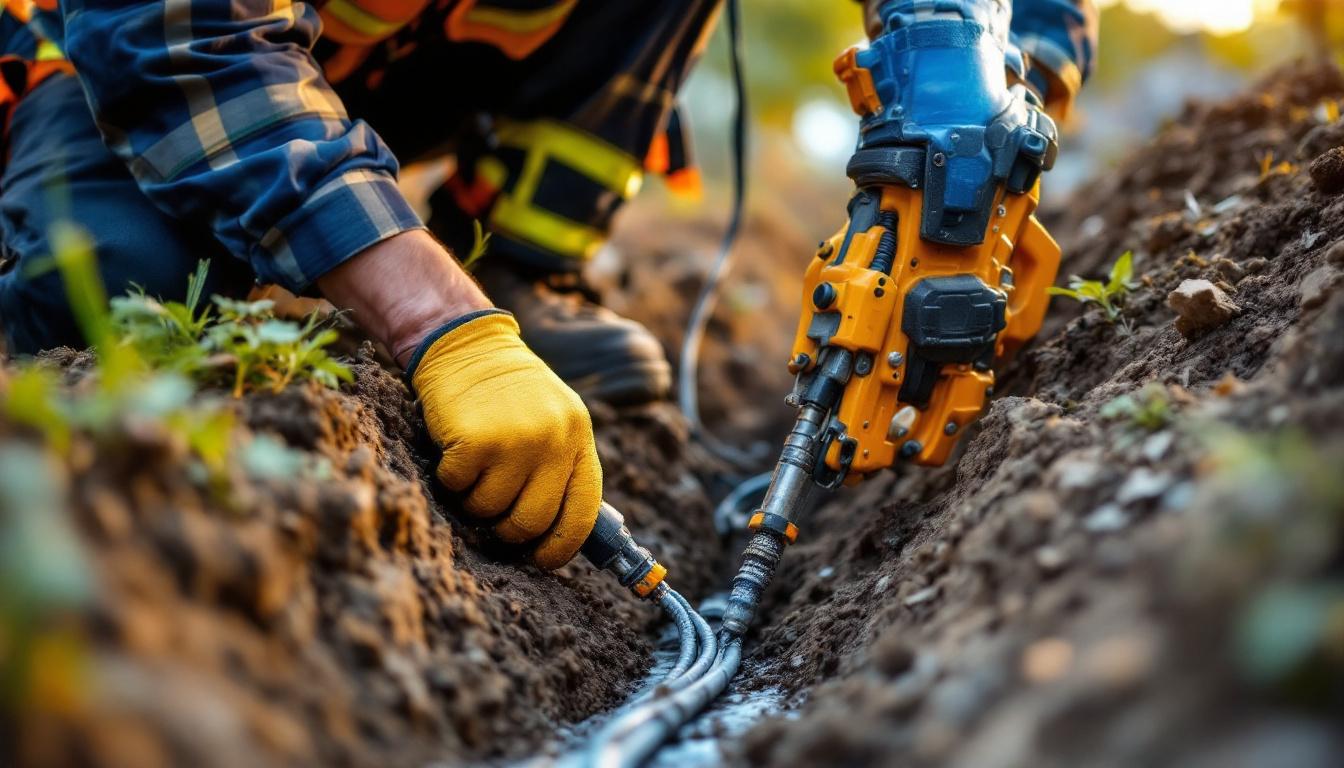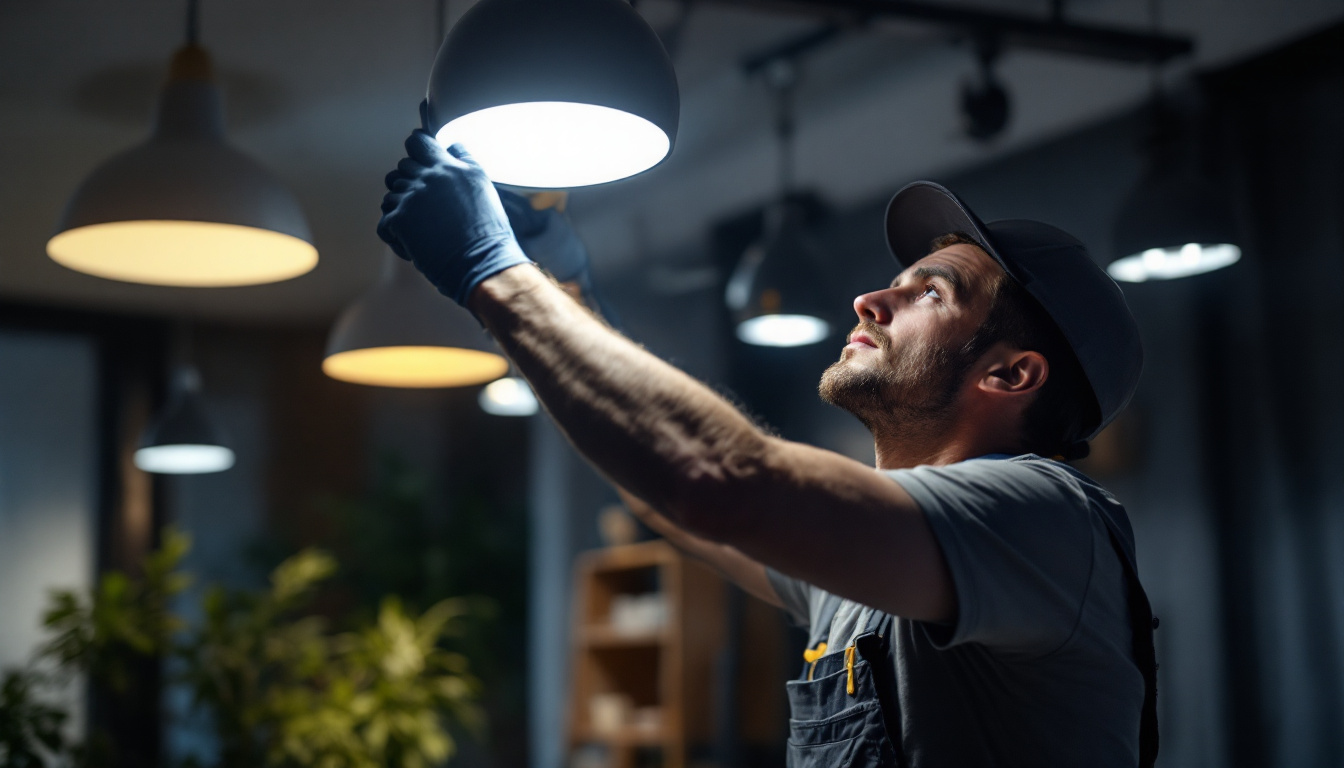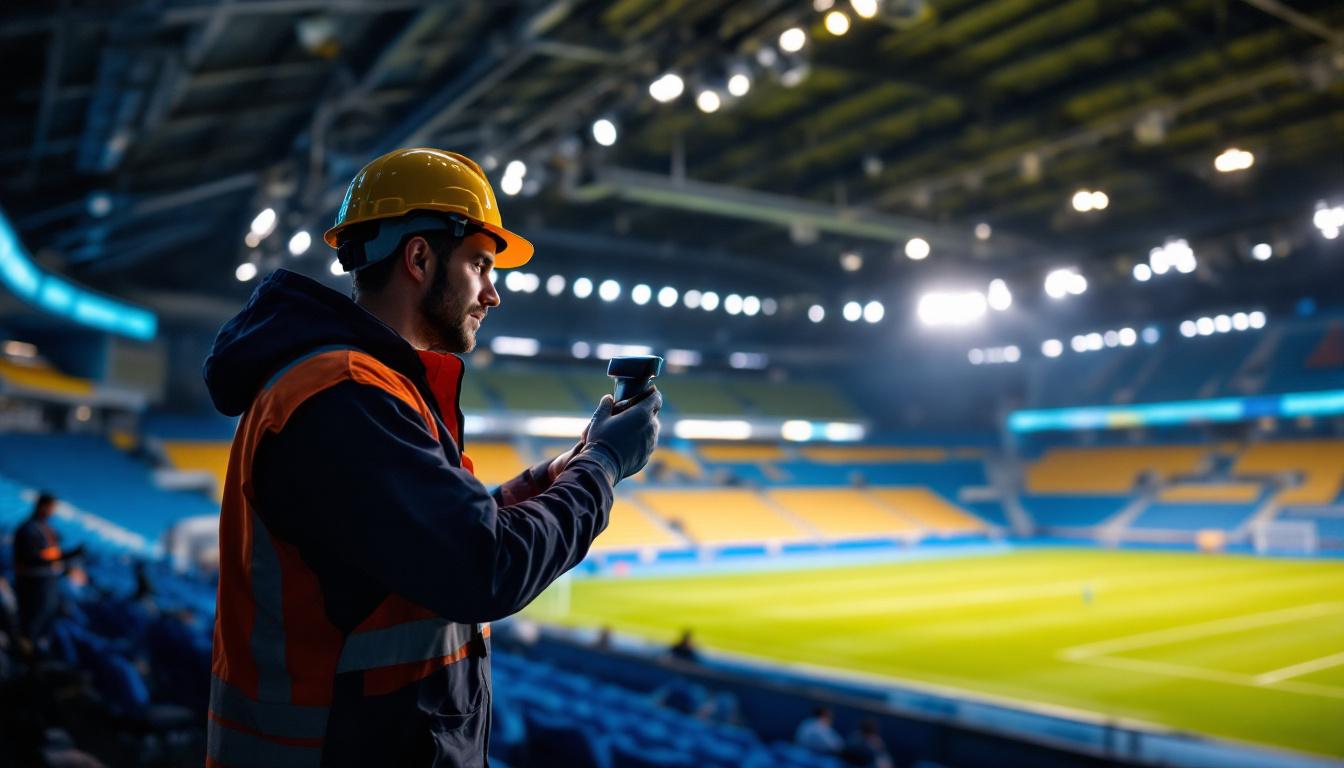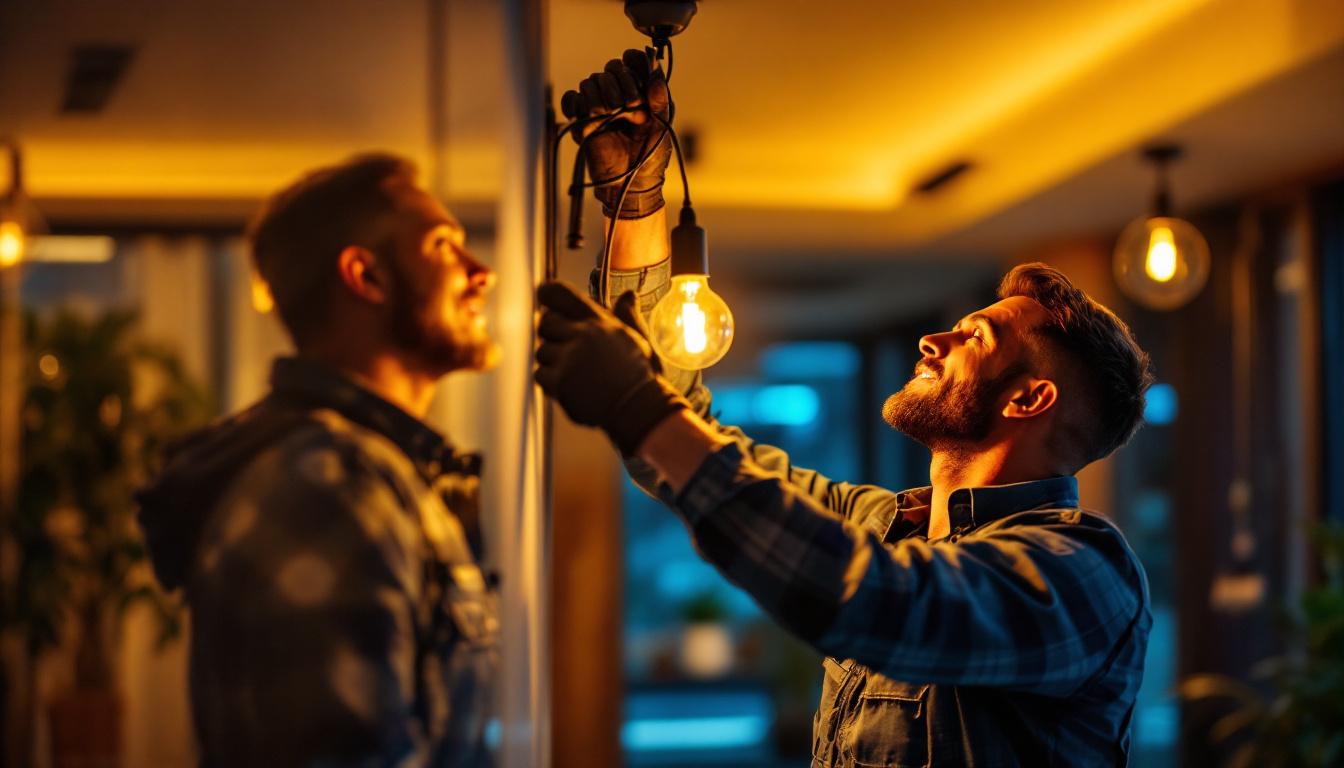
Lighting contractors play a crucial role in ensuring that outdoor spaces are well-lit, safe, and aesthetically pleasing. One of the key components in achieving this is the use of underground wire connectors. These connectors are essential for establishing reliable electrical connections that can withstand the rigors of outdoor environments. This article delves into proven methods for using underground wire connectors effectively, ensuring that lighting installations are both durable and efficient.
Underground wire connectors are specialized devices designed to join electrical wires buried beneath the ground. They are essential for connecting power to outdoor lighting fixtures, ensuring that the electrical connections remain safe and functional despite exposure to moisture, soil, and varying temperatures. These connectors are engineered to withstand the rigors of outdoor environments, making them a critical component in any landscape lighting project.
These connectors come in various types, each suited for specific applications and environments. Understanding the different types and their appropriate uses is vital for lighting contractors to ensure long-lasting installations. Additionally, the choice of connector can significantly impact the performance and reliability of the entire electrical system, making it imperative to select the right one for the job.
There are several types of underground wire connectors available, each with unique features. Some of the most common include:
Correct installation of underground wire connectors is essential for the longevity and safety of any lighting project. Improper connections can lead to electrical failures, increased maintenance costs, and even pose safety hazards. Lighting contractors must adhere to best practices during installation to ensure that the connections are secure and protected from environmental factors. This includes using the appropriate tools and techniques to strip wires, making connections, and sealing them effectively.
Moreover, understanding local electrical codes and regulations is crucial. Compliance not only ensures safety but also protects contractors from potential liabilities associated with faulty installations. Additionally, regular inspections and maintenance of underground connections can help identify any issues before they escalate, ensuring that the lighting systems continue to operate efficiently and safely. By prioritizing these practices, contractors can enhance the durability and reliability of their installations, ultimately leading to satisfied clients and successful projects.
When it comes to installing underground wire connectors, following best practices can make a significant difference in the performance and reliability of the lighting system. Here are some proven methods that lighting contractors should consider:
Before beginning any installation, thorough planning is essential. This includes assessing the site, determining the required wire lengths, and selecting the appropriate type of connector for the specific application. It is also important to consider the environmental conditions that may affect the installation.
Contractors should also ensure that they have all necessary tools and materials on hand, including wire strippers, connectors, and protective gear. A well-prepared workspace can streamline the installation process and reduce the likelihood of errors. Additionally, it’s beneficial to review local codes and regulations regarding underground wiring to ensure compliance. This not only helps in avoiding fines but also guarantees that the installation meets safety standards, which is crucial for long-term reliability.
Correctly stripping the wires is a critical step in ensuring a secure connection. Lighting contractors should use high-quality wire strippers to remove the insulation without damaging the wire strands. A clean cut will allow for better conductivity and reduce the risk of connection failure.
It’s advisable to strip only the amount of wire necessary for the connection. Excess wire can lead to unnecessary clutter and potential short circuits. Additionally, the stripped wire should be inspected for any fraying or damage before proceeding with the connection. Utilizing a wire gauge tool can help ensure that the right size of wire is used for the application, further enhancing the safety and effectiveness of the installation.
Once the wires are connected, sealing them properly is vital to protect against moisture and corrosion. For gel-filled connectors, ensure that the gel is evenly distributed around the wire. In the case of heat-shrink connectors, apply heat evenly to create a tight seal.
In some cases, using additional protective measures, such as electrical tape or heat-shrink tubing, can provide extra security against environmental factors. This is particularly important in areas prone to flooding or heavy rainfall. Furthermore, contractors should consider the use of conduit or protective sleeves for added durability, especially in high-traffic areas where physical damage could occur. Regular inspections of the installation can also help identify any potential issues before they escalate, ensuring that the lighting system remains functional and safe over time.
After installation, testing the connections is a crucial step that should not be overlooked. This ensures that the system is functioning as intended and that there are no faults in the wiring. Regular maintenance checks can also help identify potential issues before they become significant problems. In addition to routine testing, documenting the results of these inspections can provide valuable insights over time, allowing for trend analysis and better decision-making regarding future maintenance needs.
Using a multimeter, contractors can test for continuity and voltage at the connections. This helps confirm that the connections are secure and that there are no breaks in the wiring. If any irregularities are detected, troubleshooting should be conducted immediately to rectify the issue. It is also beneficial to perform insulation resistance testing, which can reveal whether the insulation around the wires is intact or if it has deteriorated, potentially leading to short circuits or electrical shocks.
Additionally, verifying that the connections are not overheating during operation is essential. Overheating can indicate poor connections or overloaded circuits, both of which require immediate attention. Implementing thermal imaging technology can enhance this process, as it allows contractors to visualize heat patterns and pinpoint problem areas that may not be immediately visible to the naked eye.
Establishing a routine for inspecting underground wire connections is a proactive approach to maintenance. Regular inspections can help identify signs of wear, corrosion, or damage that may compromise the integrity of the electrical system. These inspections should be scheduled at intervals that align with the specific environmental conditions and usage patterns of the installation, ensuring that all factors are considered in the maintenance strategy.
During inspections, contractors should check for any signs of moisture intrusion, as this can lead to corrosion and eventual failure of the connections. If any issues are detected, timely repairs or replacements should be made to ensure ongoing safety and functionality. Furthermore, it is advisable to keep a detailed log of all inspections and repairs, which can serve as a historical record and assist in planning future upgrades or replacements. This practice not only enhances accountability but also fosters a culture of safety and diligence within the maintenance team.
Despite careful planning and execution, lighting contractors may encounter various challenges when working with underground wire connectors. Being prepared for these challenges and knowing how to address them can lead to smoother installations and better outcomes.
Moisture is one of the most significant threats to underground wire connections. Even with proper sealing, water can sometimes find its way into connectors, leading to corrosion and electrical failures. To combat this, contractors should choose connectors specifically designed for wet environments, such as gel-filled connectors.
Additionally, ensuring proper drainage around the installation site can minimize the risk of water accumulation. Elevating connections above potential flood levels can also provide added protection.
Soil movement due to settling or environmental factors can cause physical damage to underground wire connections. To mitigate this risk, contractors should consider using protective conduit or enclosures for the wiring. This adds an extra layer of protection against physical stress and environmental factors.
Furthermore, marking the location of underground connections can help prevent accidental damage during landscaping or excavation activities in the future.
The lighting industry is continually evolving, with new technologies and methods emerging regularly. Lighting contractors must stay informed about advancements in underground wire connectors and related technologies. This may involve attending industry seminars, participating in training sessions, or engaging with professional organizations.
By adapting to changing technologies, contractors can enhance their skills and provide clients with the most efficient and reliable solutions available.
Underground wire connectors are a vital component for lighting contractors working on outdoor installations. By understanding the different types of connectors, adhering to best practices during installation, and conducting regular maintenance, contractors can ensure that their lighting systems are reliable and long-lasting.
Challenges such as moisture, physical damage, and evolving technologies can be effectively managed with proper planning and proactive measures. Ultimately, the success of any lighting project hinges on the contractor’s ability to implement proven methods for using underground wire connectors.
By prioritizing quality connections and ongoing maintenance, lighting contractors can deliver exceptional results that meet the needs of their clients while ensuring safety and durability in their installations.
Ready to elevate your outdoor lighting projects with the highest quality underground wire connectors? Look no further than LumenWholesale, where we provide lighting contractors with spec-grade products at unbeatable wholesale prices. Say goodbye to local distributor markups and hello to our extensive selection that meets rigorous industry standards. With LumenWholesale, you’ll enjoy the convenience of bulk buying with free shipping, ensuring you get the best value without any hidden costs. Make your next lighting project a shining success with the perfect blend of quality, affordability, and convenience. Wholesale Lighting at the Best Value is just a click away!

Explore the essential insights and innovative solutions offered by Veritas Light Ca, designed specifically for lighting contractors.

Discover how LED sports lighting can enhance your business with our comprehensive guide for lighting contractors.

Discover the common pitfalls lighting contractors encounter when installing under kitchen cabinet lighting.

Discover essential tips and strategies for lighting contractors to prevent common pitfalls in connector lighting projects.